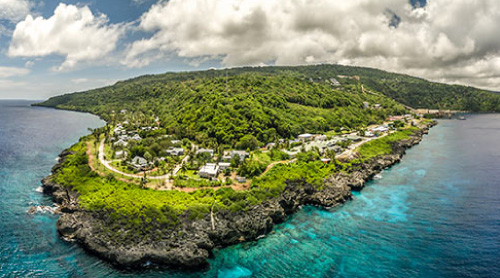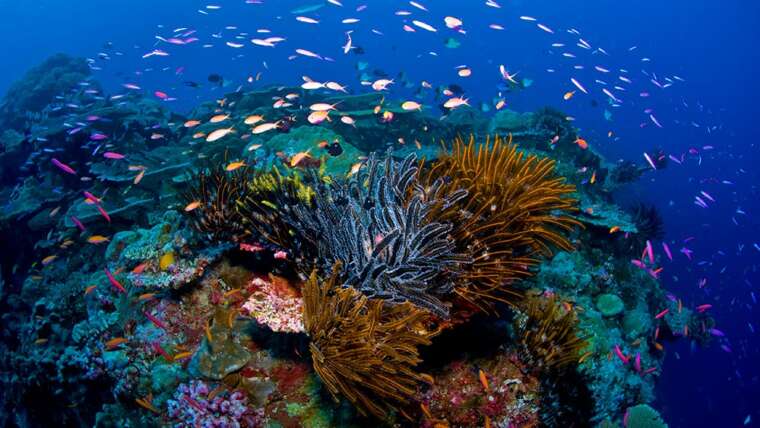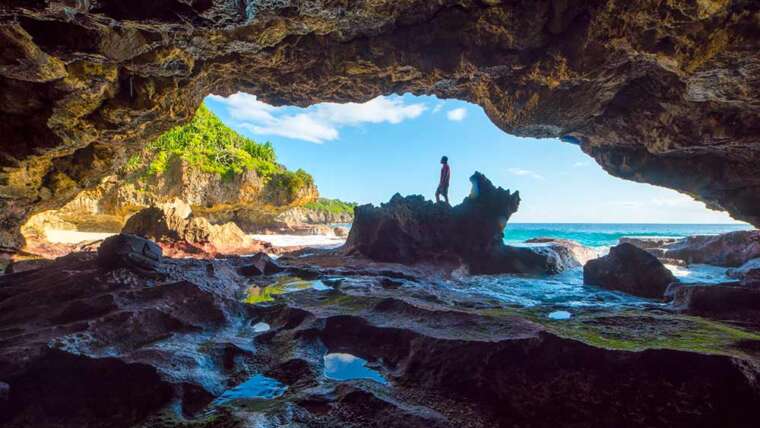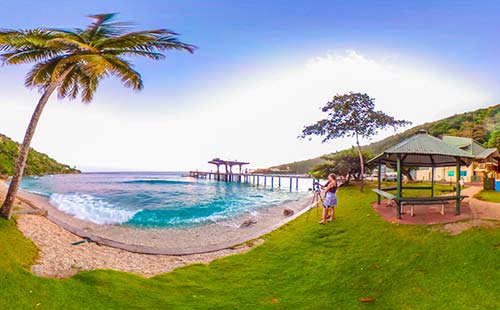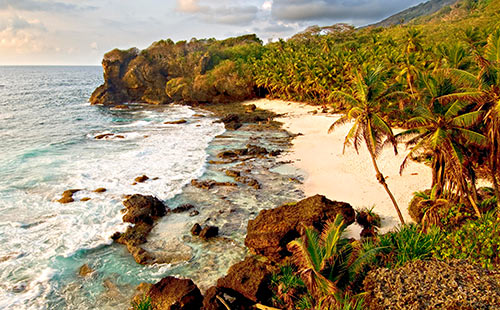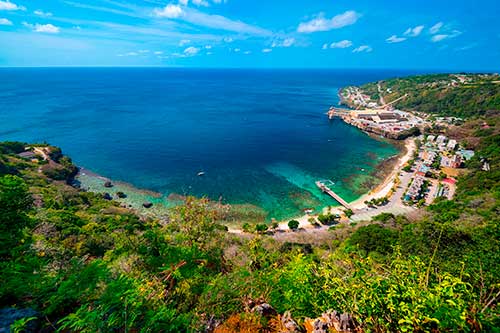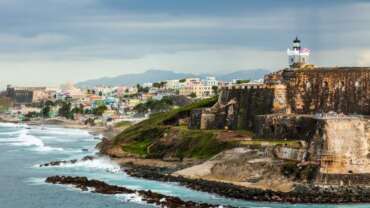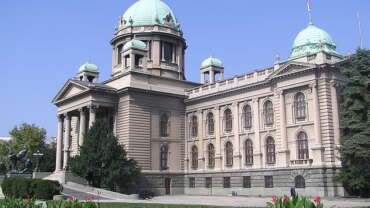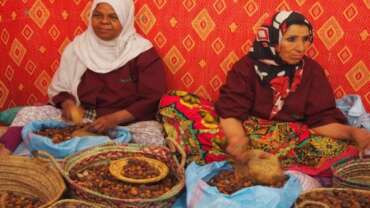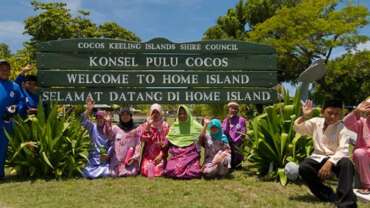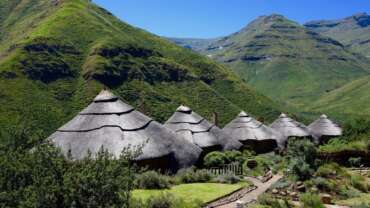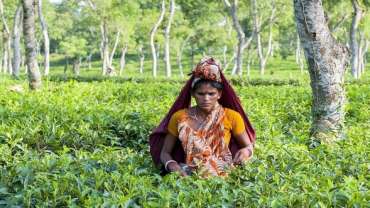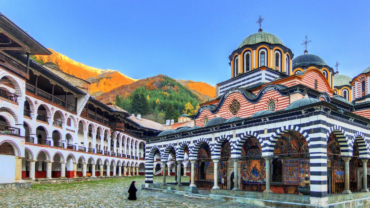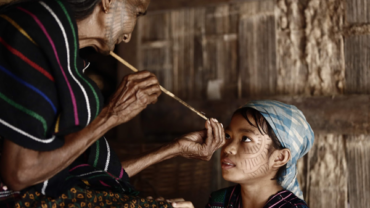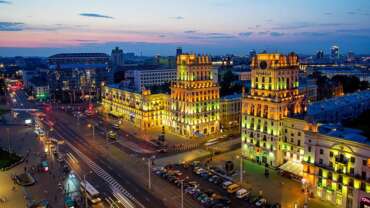Christmas Island - A Natural Wonder
Christmas Island is an Australian territory in the Indian Ocean, lying south of Java, Indonesia. A national park covers most of the 135-sq-km island, offering rainforest hikes to wetlands and waterfalls like Hugh’s Dale. Native wildlife includes nesting seabirds and the red crab, a land species known for its late-fall migration to the sea. The island is ringed with snorkelling and diving reefs.
Rising majestically from the tropical depths of the vast Indian ocean, and surrounded by azure waters lies a stunning Natural Wonder:
Christmas Island
its name alone is intriguing and stirs interest.
We invite you to uncover the remarkable surprises of this island full of natural wonders: from the unique annual red crab migration to rare and unusual birds and glorious deserted beaches. The island displays a curious amalgam of cultures, history and industry, emerging as a place where all these elements create a truly unusual travel experience.
Christmas Island History
Behind the laid-back multicultural ambience of Christmas Island today lies a fascinating and sometimes turbulent history.
It was the discovery of phosphate in 1888 which was to guide the island’s destiny for the next century. It’s a story of two men, George Clunies Ross and John Murray, and their quest to reap the rewards of phosphate with an imported workforce of Chinese, Malays and Sikhs, who often endured appalling conditions. The signs remain today of the island’s WWII history including a restored gun emplacement. You can also see glimpses of the Japanese invasion and occupation, when islanders and allied submarines successfully sabotaged the mine effort and hundreds of islanders were then shipped to Japanese prisoner of war camps in Indonesia.
Britain took possession of the Island in the name of Queen Victoria, but in 1946 it was placed under the jurisdiction of the Crown Colony of Singapore. In 1958, Britain transferred sovereignty to Australia, and the Island was made an Australian Territory.
As well as the info on this page, you may also like the website, Christmas Island Archives, which has further history articles & images about Christmas Island.
Historical Timeline
25 December 1643
Captain William Mynors on the East Indian Company vessel, the Royal Mary, sees and names the Island on Christmas Day.
1857
Crew of the vessel Amethyst tires to explore the island, but are hampered by inland cliffs and dense jungle.
1887
A party from British naval vessel HMS Egeria reach the summit of what is now Murray Hill, finding phosphate as predicted by Scottish naturalist, Dr John Murray, and in a nearly pure form.
6 June 1888
Great Britain annexes Christmas Island at the urging of John Murray.
1888
George Clunies-Ross, owner of the Cocos (Keeling) Islands sends his brother Andrew and a small party of Cocos Malay workers to form a settlement at Flying Fish Cove to pre-empt any other claim to the island’s resources.
1891
Britain offers rivals Murray and Clunies-Ross a joint phosphate lease for 99 years.
1897
The rival claimants are induced to form the Christmas Island Phosphate Company.
1898
200 Chinese labourers, eight European managers and five Sikh policemen arrive on the island to make up workforce, supplemented by a small number of Malays.
1900
First major shipment of phosphate.
1900-1904
550 die from beri-beri, most of them Chinese.
1908
CW Andrews of the British Museum conducts a comprehensive study of the island’s natural history, following on from his earlier study in 1989.
1914-1918
During World War I phosphate mining was reduced and a rail link from Settlement to South Point built.
1929
The TSS Islander II, a tin screw steamer, was built and remained the islands transport and supply ship until 1960.
6 February 1942
A carley float carrying a body was rescued in Flying Fish Cove. The body was prepared and then buried in the European Cemetery. He was believed to have been from the HMAS Sydney and is now recognised as The Unknown Sailor.
1942
Japanese attack the Norwegian phosphate ship “The Eidsvold” in Flying Fish Cove; 50 Asian and Australian families are evacuated to Perth.
March 1942 – 1945
900 Japanese troops invade and occupy Christmas Island, imprisoning remaining Europeans and hunting 1000 Malay and Chinese workers in the jungle. Islander sabotage and allied submarines lead to suspension of mining. In 1943, half the population is sent to prison camps in Indonesia when food runs low.
1949
Australia and New Zealand buy the Christmas Island Phosphate company and Christmas Island is administered by the Colony of Singapore.
1950’s
Population expands, with labour from Singapore, Malaya and Cocos and supervisors from Australia
1957
The Australian Government paid 2.9 million pounds to Singapore for lost phosphate royalties.1 October 1958
Sovereignty is transferred by the United Kingdom to Australia and Christmas Island becomes an Australian Territory.
1970’s
Union of Christmas Island Workers formed to improve living and working conditions on the Island.
1977
First Government Conservator from the Australian National Parks and Wildlife Service appointed after conflicts between mining and conservation.
1980
The first National Park declared over Egeria Point area.
1986 and 1989
Christmas Island National Park extended to cover 63% of the Island.
Discovery & Settlement
For centuries, Christmas Island’s isolation and rugged coasts provided natural barriers to settlement. British and Dutch navigators first included the island on their charts from the early seventeenth century, and Captain William Mynors of the East India Ship Company vessel, the Royal Mary, named the island when he arrived on Christmas Day, 25th December, 1643. He was unable to land, however, and it was not until 1688, when the English buccaneering ship Cygnet arrived under Captain Swan, that the first recorded landing took place.
In his book “New Voyage Round the World” (1699), Dampier, who was second mate or master’s mate, recounted how crewmen landed on the west coast (probably at The Dales) and brought back on board large Robber Crabs (Birgus latro) to eat and wood for a pump. This was the first recorded landing on Christmas Island. During the 1872-76 HMS ‘Challenger’ oceanographic expedition around the world, naturalist Dr John Murray collected many mineral specimens, including some from the sea-bed adjoining the Netherlands East Indies (now Indonesia). He predicted that phosphate deposits would be found on an island in the area. British Navy landings on Christmas Island in 1887 confirmed his prediction, and, at his urging, Britain annexed the Island on 6 June 1888.
In November 1888 George Clunies-Ross, owner of the Cocos (Keeling) Islands some 900 kilometres to the south west, sent his brother Andrew and a small party of Cocos Malay workers to form a settlement at Flying Fish Cove to pre-empt any other claim to the Island’s resources. Timber was exported to Cocos and experimental planting took place – none of it successful.
Sovereignty
The Christmas Island Phosphate Company found it difficult to re-establish their operations at the profitable pre-war levels. Australia and New Zealand had become their biggest customers, and on 31 August 1948 their Governments entered into an Agreement to purchase the Company and all its assets. This was given effect by the Christmas Island Agreement Act of 1949. The two Governments employed the British Phosphate Commissioners (BPC), who already mined Ocean Island and Nauru, as their managing agents to run the Christmas Island operation. A massive expansion of infrastructure capacity followed; recruitment of labour from Singapore, Malaya and the Cocos (Keeling) Islands expanded the population; and increasingly the supervisory staff were recruited from Australia. The Island was administered as part of the Colony of Singapore, with a resident District Officer and staff.
Christmas Island Settlement
The United Kingdom had embarked on a de-colonisation process in the period following the Second World War, and the Australian Government expressed interest in acquiring Christmas Island from the UK, just as it had acquired the Cocos (Keeling) Islands in 1955. Agreement was reached, and on 1 January 1958, Christmas Island was excised from the Colony of Singapore and made a separate Crown Colony. The Second Reading Speech in the Australian Parliament on 30 September 1958 for the Christmas Island Agreement Bill included the following: “The principal item in this connexion is the ex gratia payment of approximately 2,800,000 pounds to the Singapore Government to compensate for the loss of revenue from royalties and rent, which were applied to Singapore when the island was a British Colony.” On 1 October of the same year, sovereignty was transferred from the UK to the Commonwealth of Australia. 1 October is still celebrated as Territory Day. The Christmas Island Act 1958 provides the basis of the Territory’s administration, and an Administrator, appointed by the Governor-General of Australia, resides on the Island.
Modern Mining & Conservation
Dramatic social and political changes occurred in the 1970’s with the unionisation of the mine workers.
The Union of Christmas Island Workers, “The Union”, remains a strong force in island politics today, and, in conjunction with the Sweetland Enquiries of 1980 and 1982, has been responsible for dramatic improvements in living and working conditions. Also in the 1970’s, conflicts between conservation and mining interests led to the company appointing a conservation officer in 1974. This was followed in 1977 by the appointment of a Government Conservator from the Australian National Parks and Wildlife Service.
In 1980, a National Park was declared in the Egeria Point area. The National Park now covers over 63% of the island. Around this time, Australia and New Zealand Governments re-negotiated their agreement for provision of phosphate to the two countries. As part of this process, the British Phosphate Commissioners relinquished the management of the mine to the newly formed Phosphate Mining Company of Christmas Island (PMCI). As deposits of preferred quality phosphate neared exhaustion, the mining operation faced economic constraints and probable closure. Initial steps in this direction were two generous redundancy schemes in 1984 and 1986.
The Government created the Christmas Island Services Corporation to relieve the mining operation of community services such as housing, domestic roads, street lighting, swimming pools and cinemas. 1984 also saw the benefits of Australian Citizenship extended to the island in the form of social service benefits and voting in Commonwealth elections. Taxation was also introduced. The effects of drought and low phosphate prices led to a Government decision to close the mine in December 1987.
Phosphate Mining
Murray in England and George Clunies-Ross on Cocos became rivals for control of the phosphate deposits. The British Government offered them a joint 99 year lease in return for a small royalty. Exploration by the Clunies-Rosses showed that the deposits were enormous, and samples sent to England proved to be of high quality. In 1897 the rival claimants were induced to form the Christmas Island Phosphate Company and the lease was transferred to this commercial body. In 1899 Andrew Clunies-Ross and his party returned to Cocos just as the first imported labour arrived. Chinese coolie labour and a small number of Malays and Sikhs operated under European supervision. The first commercial exports of phosphate were sent to Japan and Germany in January 1900. By 1901 the Island population had taken shape: 640 Chinese, a dozen Sikh policemen, 20 Malay boatmen and pony-handlers, a British CIP Co Island Manager, engineers and trade supervisors and a Chinese-speaking British District Officer from the Straits Settlements with a clerk/interpreter.
The rush to take advantage of high world phosphate prices led the Company to cut corners, and a serious outbreak of beri-beri, caused by vitamin deficiency, led to almost 550 deaths from the disease, almost all coolies, in the period 1900-04. Conditions were eventually improved and the mining operation began to flourish in the period up till the First World War, with Japan the biggest customer.
World War II
From the outbreak of war in South East Asia in December 1941, Christmas Island was a target for Japanese occupation because of its rich phosphate deposits. A naval gun was installed under a British officer and four NCOs supported by Indian soldiers.
The first attack was by a Japanese submarine that torpedoed a Norwegian vessel, the Eidsvold, loading phosphate in Flying Fish Cove. This was on 21 January 1942. The vessel drifted and eventually sank off West White Beach. 50 European and Asian staff and their families were evacuated to Perth. In late February and early March 1942, two aerial bombing raids and shelling from the sea led the District Officer to hoist the white flag. After the Japanese naval group sailed away the British officer raised the Union Jack once more. During the night of 10 – 11 March, a mutiny of the Indian troops, abetted by the Sikh policemen, led to the murder of the five British soldiers and the imprisonment of the remaining 21 Europeans. On 31 March a Japanese fleet of 9 vessels arrived and the Island was surrendered. A naval brigade, phosphate engineers and 700 marines came ashore and rounded up the workforce, most of whom had fled to the jungle. Sabotaged equipment was repaired and preparations were made to resume the mining and export of phosphate.
Isolated acts of sabotage and the torpedoing of the Nissei Maru at the wharf on 17 November 1942 meant that only small amounts of phosphate were exported to Japan during the occupation. In November 1943, over 60% of the Island’s population was evacuated to Surabayan prison camps, leaving of total population of just under 500 Chinese and Malays and 15 Japanese to survive as best they could. In October 1945 HMS Rother reoccupied Christmas Island.
Christmas Island Culture
From its early days of phosphate discovery in 1881, when settlers and workers arrived bringing cultural and religious traditions, the island community grew to become a fascinating melting pot of cultures.
Today, visitors are welcomed and encouraged to join in, learn more and experience the thriving, contemporary Christmas Island “feel” in the many amazing foods, festivals and places.
Islanders are proud of their home and its harmony, with a blend of Buddhist, Christian, Taoist and Muslim cultures that are celebrated openly. Places of worship are open to all.
The People
The diversity of the settlers’ native tongues and cultures has influenced the island’s own culture, as evidenced by the range of ethnic festivals held throughout the year. Today most residents are Chinese followed by Australian / Europeans and Malay. All are permanent residents of Australia and the majority hold Australian citizenship.
Language
Though English is the official language there are many residents who generally communicate in Malay or one of the four Chinese dialects. The earliest settlers spoke English and Cocos Malay, a unique version of Bahasa Indonesia which has been isolated from the mainstream language for over 150 years. Early arrivals from China mainly spoke Cantonese. Many early place names around the island are Cantonese words – such as Poon Saan- literally meaning half way up the hill.Post war arrivals who came from Penang introduced other Chinese languages including Hakka, Hainese, Hokkien and Teochew, whilst those from Singapore introduced Mandarin. Bahasa Malayu is widely spoken by the Malay Community.Because English was not a prerequisite for employment, a sizeable proportion of todays community is not fluent in English and many residents still converse in their native tongue. The influx of tourists has had an impact on the island’s language. Indonesian is frequently spoken along with many of the Chinese languages. Thai, Japanese, German and a few other Europen languages are sometimes heard.
Taste of The Tropics
Christmas Island’s restaurants, cafes and pubs showcase its rich cultural mix from spicy asian fare to modern western cuisine. A variety of styles is offered from traditional grills, to colonial settings to laid back casual pub options. Some offer the chance to relax over your meal while appreciating stunning outlooks.
Take advantage of the Island’s many picnic and barbecue venues and pack your own hamper from supplies available at the local shops. Restaurants use, and shops supply, fresh local produce when available.
Cafe and restaurant options may be limited during Ramadan, Chinese New Year and Christmas – the Visitor Information Centre can provide information as to what is open during your visit. As most food on Christmas Island is imported the cost for food and meals may be higher than other places to cover the additional transport.
Cultural Tips
– It is suggested that ladies should dress modestly out of respect in the Kampong area.
– Shoes should be removed before entering a house, temple or mosque.
– Muslims use their right hand for eating, giving and receiving and will appreciate if you do the same when meeting them.
– There are dietary requirements which some of the different religions must adhere.
– Refrain from touching a persons head.
– Visitors are welcome to enter and photograph the Chinese Temples and join in the celebrations.
Religions
Despite its mixture of races, languages and religious beliefs, the community works in harmony, freely sharing and borrowing from each others cultures. Religious tolerance is evident from the number of Chinese temples-Buddhist, Taoist, Confucian and others as well as a Christian church, Muslim Mosque and a Baha’i Centre. Many religious and cultural festivals are observed including Christmas, Easter, Chinese New Year and Hari Raya.The cultural diversity of the island has resulted in an adaptation and blending of ideas. People are always happy to tell you why things can sometimes be different on Christmas Island!
About Christmas Island
Location
Christmas Island is a dot in the Indian Ocean, located 2600km north-west of Perth, Western Australia. Even though it is an Australian Territory, its closest neighbour is Java, 360km away.
Geography
Christmas Island is the summit of a submarine mountain, rising steeply to a central plateau dominated by stands of rainforest. This plateau reaches heights of up to 361 metres and consists mainly of limestone and layers of volcanic rock.
Geologists believe that about 60 million years ago the cone of an undersea volcano surfaced, forming a basin on which a coral atoll then began to form. More then 20 million years ago, the atoll appears to have sunk slowly and limestone was deposited as the coral began to build up. Ten million years later, this process stopped and an island began to emerge from the sea in a series of uplifts. Each of the island terraces was formed by the development of the fringing reef and sea cliff erosion before being uplifted. The lagoon drained and the central plateau was formed. Evidence of these volcanic origins can be seen at The Dales, and Dolly Beach where the basalt rock is exposed, forming the bed of freshwater streams.
The island’s 80 kilometre coastline is an almost continuous sea cliff, of up to 20 metres in height. In a few places, the cliff gives way to shallow bays with small sand and coral shingle beaches. The largest of these bays forms the island’s only port; Flying Fish Cove.
The island is surrounded by a narrow encircling coral reef. There is virtually no coastal shelf, and the sea plummets to a depth of about 500 metres within 200 metres of the shore.
Climate
Christmas Island experiences a tropical equatorial climate with wet and dry seasons. The wet season is from December to April when the island comes under the influence of the north-west monsoons. During the rest of the year, the south-east trade winds bring slightly lower temperatures and humidity with much less rain.
Tropical cyclones occasionally pass close to the island during the monsoon season, bringing strong winds, rain and rough seas. Since settlement, no cyclone has been recorded passing directly over the island.
The mean annual rainfall is 1,930 millimetres. Most of this rain falls between November and May. February and March are usually the wettest months.
Because of the oceanic influence, the relative humidity does not vary seasonally as much as rainfall. Humidity usually ranges between 80 – 90%. Temperatures on the island vary little from month to month. The average daily maximum temperature reaches a high of 28° Celsius in April and the average daily minimum temperature falls to 22° Celsius in August.
Christmas Island National Park
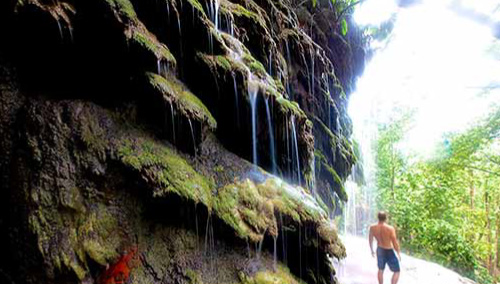
If you love getting back to nature, you will love Christmas Island!! 63% of the island’s 135 square kilometres is national park and the island’s close proximity to South East Asia and the equator has resulted in a diverse range of flora and fauna. The Christmas Island National Park is managed by Parks Australia – a division of Environment Australia.
It took millions of years for the island to emerge from the immense depths of the Indian Ocean. Isolation has limited the number of plants and animals able to reach these distant shores and survive. As a result, the island’s ecology has developed in a distinctive way. Some species can only be found here while others are threatened or considered to be endangered elsewhere.
The Christmas Island National Park was declared under Australian Commonwealth law and currently protects 85 square kilometres, over 63% of the entire land and much of the fringing reef. The park protects and preserves the important ecological systems which characterise this beautiful tropical island: the magnificent rainforests, the ocean shores and reefs.



